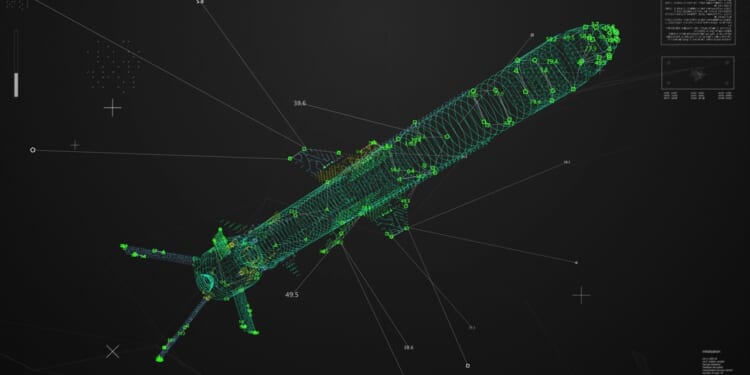Some experts have speculated that China has used American artificial intelligence technology—allegedly supplied through a company in the United Arab Emirates—to improve the range of its air-to-air missiles.
American intelligence believes that an artificial intelligence/tech company known as G42 that is based in the United Arab Emirates (UAE) provided sensitive technology to Huawei Technologies—and, by extension, to China’s defense sector. In turn, the technology provided to Huawei by the UAE-based firm was used to improve the range of the Chinese PL-15 and PL-17 air-to-air missiles.
Allegedly, the technology transferred to Huawei by the UAE involved software that ultimately helped Chinese engineers to optimize missile flight trajectories and other performance parameters.
Why China’s PL-15 Missile Matters
This is an especially important point because the PL-15, in particular, made headlines this summer during the four-day India-Pakistan war. At that time, the Pakistani Air Force (PAF) stunned the world with how well their Chinese-equipped warplanes (paired with the PL-15 missile) did against the French-supplied Dassault Rafale warplanes and Western-supplied missiles of the Indian Air Force (IAF) at the outset of the conflict.
The Indian military managed to capture a PL-15 intact during their four-day war with neighboring Pakistan and have since reverse-engineered it, incorporating its superior features into their indigenous air-to-air missile.
According to US intelligence, though, the reality of just how the Chinese managed to leapfrog the West in air-to-air missile technology redounds to technology theft. At least, that’s what the Western intelligence services want you to believe. Although, it is believable because of how much of China’s technological base was built on outright industrial espionage.
But it should be noted that the West cannot keep resting on that notion for much longer. Multiple engineers and scientists I’ve spoken to over the years insist that China is rapidly catching up to the West in terms of their technological sophistication.
Indeed, some experts argue that, in key high-tech domains, the Chinese may have even surpassed the West in terms of advancement. Nevertheless, the fact remains that China’s PL-15 and PL-17 missiles are sky monsters that upstaged their far more expensive Western counterparts in the recent India-Pakistan war.
China and the UAE Both Deny the Transfer
Both G42 and Huawei strongly deny the allegations about technology transfer, and it is doubtful that the truth will ever be fully known, given how both firms are incentivized to not openly discuss this matter.
If the allegations are true, however, this would represent a major breach of trust. After all, the UAE is a major US ally in the Middle East. The actions of their firm, if true, might have enabled a key US strategic competitor—China—to leapfrog the US military in long-range air-to-air missiles that will eventually challenge US airpower.
For instance, if China’s PL-15 or PL-17 missiles can gain significant range and targeting advances over the Americans, then US forces and platforms might be at increased risk of being shot down in any contingency involving a defense of Taiwan—which is likely yet another reason for why President Donald Trump has taken such a conciliatory tone with Beijing recently.
The allegations are not hard to believe because of how the Middle East has been triangulating the American and Chinese high-tech industries off each other for years. In fact, this is one of the main reasons why Trump sought his massive trade deal with the region several months ago and his focus was on joint, exclusive AI development with the UAE, Saudi Arabia, Qatar, and others. It was done, in part, to try to close the connectivity between the Mideast tech corridor and China. (In fact, Beijing had for years used the Middle East to acquire high-end computer chips that were denied to them by US sanctions.)
So while both the UAE government and G42 categorically deny these claims, the fact remains that in the wake of these allegations, the two have stepped up their efforts to remove all Huawei-supplied gear in critical infrastructure and align more with American tech firms. According to a report from last year in China-US Focus,G42’s representatives have publicly stated that “we cannot work with both sides” in the tech war.
Thus, they must choose. And it sounds like they’re choosing Uncle Sam.
Of course, if the allegations are true, then it just means they were caught with their hand in the cookie jar. Who knows if there isn’t still double-dipping occurring?
Almost Everything Is “Dual-Use Technology” Now
This story further highlights the complexities involved in high-tech development. Almost all of these programs are dual-use in nature. Therefore, even non-military technology not covered by US sanctions can have military implications. The categorization of “military tech transfer,” then, becomes almost impossible to define.
US intelligence believe they have a case of technology transfer. The UAE, G42, and Huawei deny this. Regardless, this is yet another wakeup call (in a long line of wakeup calls) in terms of China both catching up with—and possibly overcoming—Western technology dominance. Based on how the trade war played out, I suspect the period of readjustment in which China begins to fundamentally redefine the power structure of the world in its favor is fully underway.
About the Author: Brandon J. Weichert
Brandon J. Weichert is a senior national security editor at The National Interest. Recently, Weichert became the host of The National Security Hour on America Outloud News and iHeartRadio, where he discusses national security policy every Wednesday at 8pm Eastern. He is also a contributor at Popular Mechanics and has consulted regularly with various government institutions and private organizations on geopolitical issues. Weichert’s writings have appeared in multiple publications, including The Washington Times, National Review, The American Spectator, MSN, The Asia Times, and others. His books include Winning Space: How America Remains a Superpower, Biohacked: China’s Race to Control Life, and The Shadow War: Iran’s Quest for Supremacy. His newest book, A Disaster of Our Own Making: How the West Lost Ukraine is available for purchase wherever books are sold. He can be followed via Twitter @WeTheBrandon.
Image: Shutterstock / motionVectors.


















